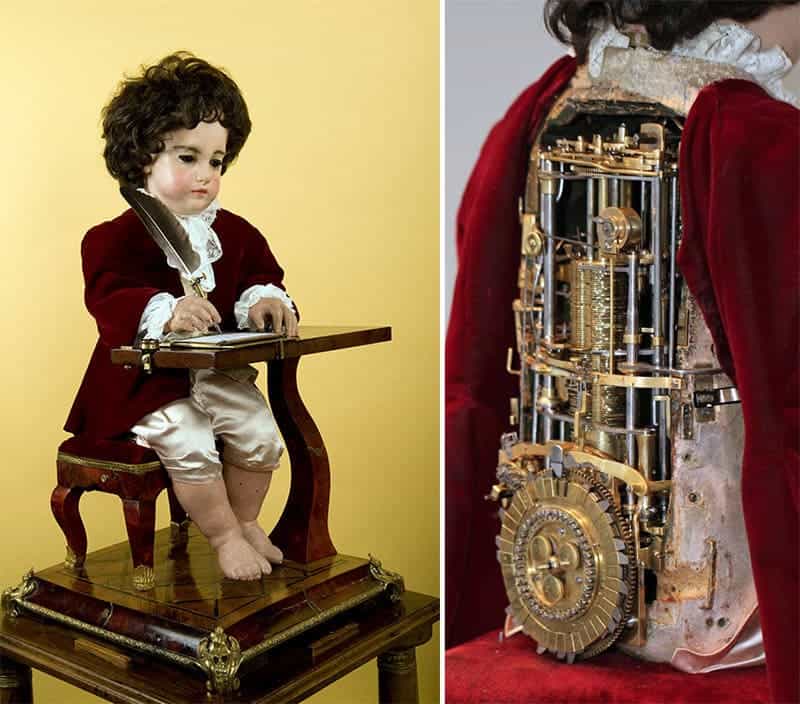
You may find it hard to believe, but what you’re seeing in the picture above is actually a self-operating, programmable machine, capable of writing letters and words with a quill pen, that’s still functioning after a quarter of a millennium.
The lovely automatons
An automaton (plural: automata or automatons) is a self-operating machine or robot. What you’re seeing above is such a device called “The Writer” – an automaton built in the 1770s by world-renowned Swiss watchmaker, Pierre Jaquet-Droz (1721-1790), and his family: son Henri-Louis Jaquet-Droz and Jean-Frédéric.
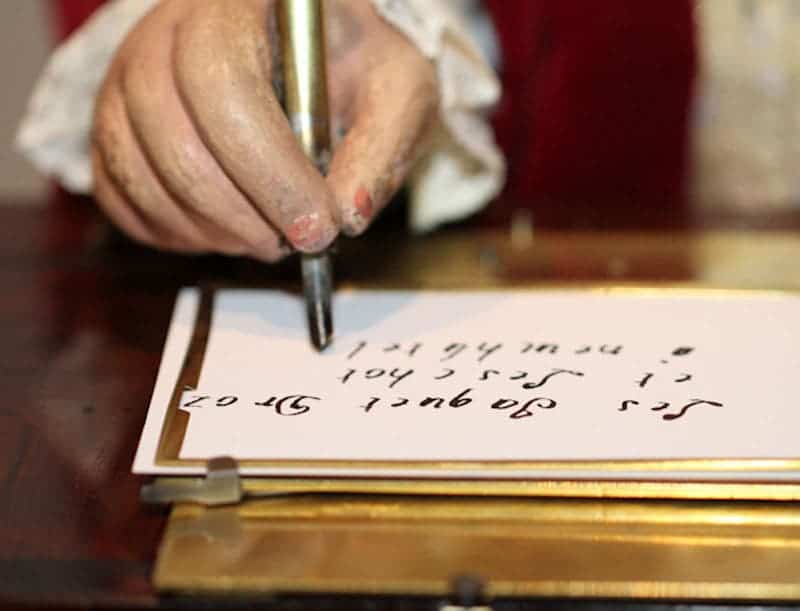
Made from 6.000 individual parts, the 240-year-old machine can be thought of as the ancestor of moderen computers. At its core, the Writer features a large stack of 40 cams with three cam followers that read their shaped edges and translate them into movements of the boy’s arm. Cams are rotating or sliding piece used in mechanical constructions especially in transforming rotary motion into linear motion or vice-versa.
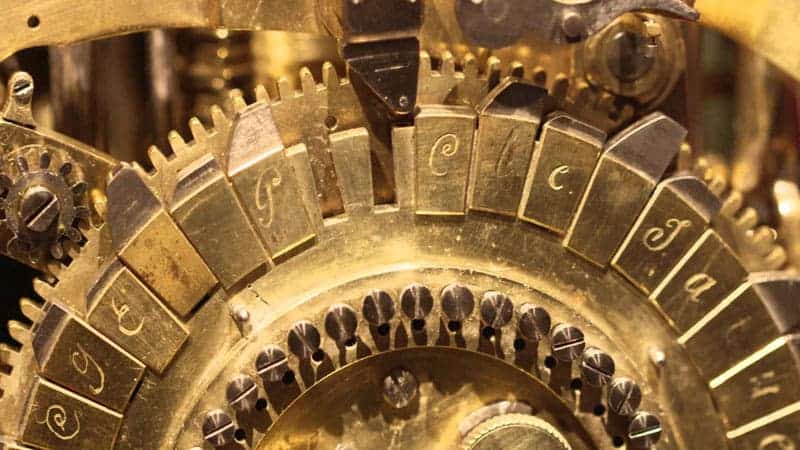
The cams are controlled by a large wheel or ‘system disk’, made up of letters that could be removed, replaced and reordered (therefore, the machine is programmable). The Writer is able to write any custom text up to 40 letters long, spread over four lines.
The Jaquet-Droz automata
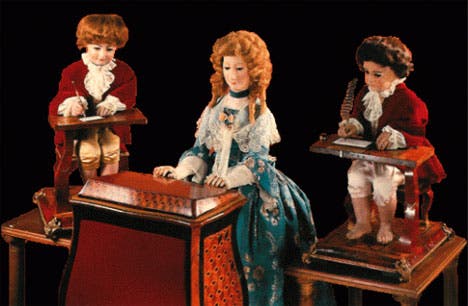
But the Writer isn’t unique in its conception and design – he has two other siblings: the musician and the draughtsman. Interestingly enough, they were built simply to raise notoriety on the watches and other mechanical wonders sold by the family (including mechanical birds for example – but we’ll go more on that later). The History and Archeology society of Neuchâtel eventually bought them in 1906, for 75,000 francs in gold (a colossal sum at the time), and they can still be found in the museum there.
The Musician is a female organ player. The music is not faked – it’s actually genuine music, played on a custom built instrument by pressing the keys with her fingers; it’s not pre-recorded. She also “breathes” – the movements of the chest can be seen, follows her fingers with her head and eyes, and also makes some of the movements that a real player would do, such as balance her torso for example.
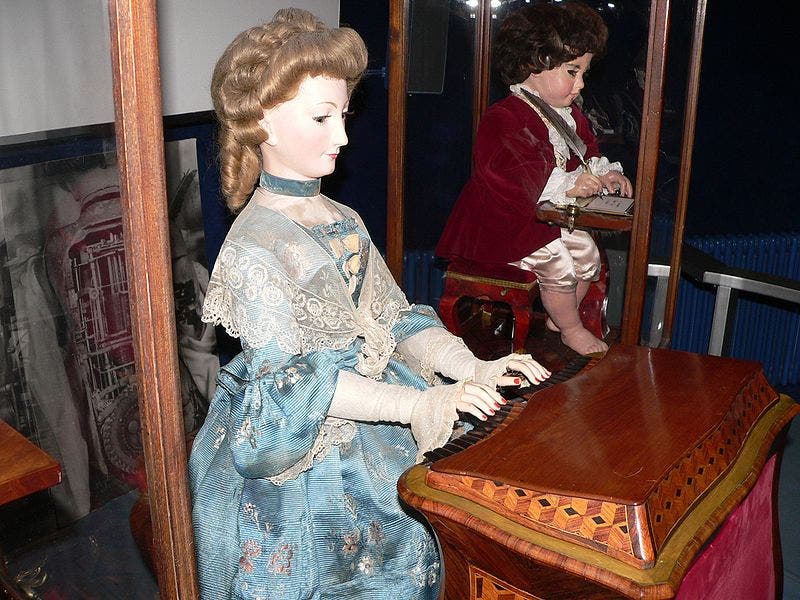
The Draughtsman is a young child who can actually draw four different images: a portrait of Louis XV, a royal couple (probably Marie Antoinette and Louis XVI), a dog with “Mon toutou” (“my doggy”) written beside it, and a lovely scene of Cupid driving a chariot pulled by a butterfly. He also relies on a system of cams to code the movements of his hand, which can be linear and circular, and he can also lift the pencil – this device is also programmable. He also sometimes moves on his chair in a very cute fashion, and from time to time, he blows on the pencil to remove dust – a common practice back then; keep in mind, these machines were built more than 240 years ago – move than 100 years before the ballpoint pen!
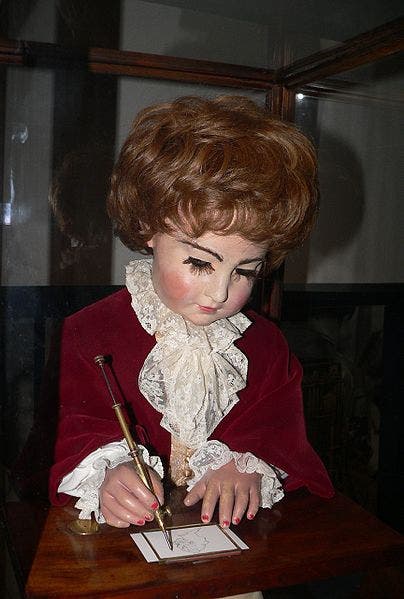
The writer is the most complex of the three automata, with his programmable writing and his eyes following the text he is writing… it’s just superb.
Remarkable designs from a remarkable man
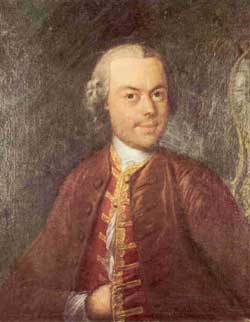
Pierre Jaquet-Droz was one of the most remarkable men of his time. He designed and built not only watches, but also animated dolls, automata, and mechanical birds. His astonishing mechanisms fascinated the kings and emperors of Europe, China, India, and Japan – here’s a small anecdote about one of his magnificent watches:
There were seen on it a negro, a dog, and a shepherd; when the clock struck, the shepherd played six tunes on his flute, and the dog approached and fawned upon him. This clock was exhibited to the King of Spain, who was delighted with it. “The gentleness of my dog,” said Droz, “is his least merit; if your Majesty touch one of the apples, which you see in the shepherd’s basket, you will admire the fidelity of this animal.” The King took an apple, and the dog flew at his hand, and barked so loud, that the King’s dog, which was in the room, began also to bark; at this the Courtiers, not doubting that it was an affair of witchcraft, hastily left the room, crossing themselves as they went out. The minister of Marine was the only one that ventured to stay. The king having desired him to ask the negro what o’clock it was, the minister obeyed, but he obtained no reply. Droz then observed, that the negro had not yet learned Spanish.[1]
Even to this day, the company founded by him survives and sells high-end watches – but in my book, that’s just a small homage to the genius and visionary that was Pierre Jaquet-Droz.


